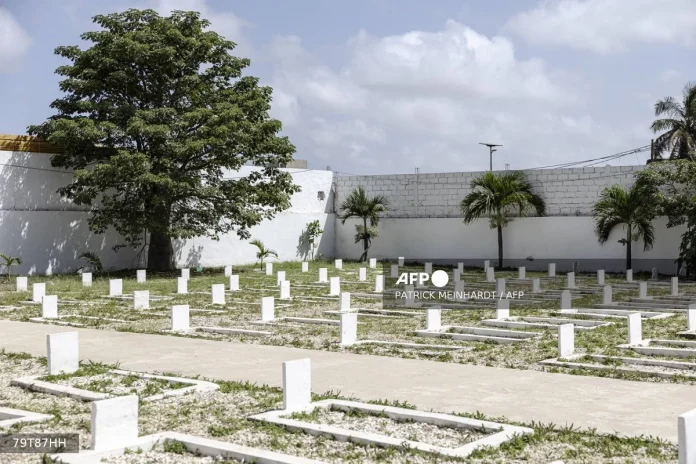THIAROYE: Archaeologists are excavating graves at the Thiaroye military cemetery near Dakar to uncover the truth about a World War II-era massacre by French colonial forces.
Approximately 1,600 West African soldiers were detained at the Thiaroye camp in November 1944 after being captured by Germany while fighting for France.
Discontent grew among the soldiers over unpaid wages and demands for equal treatment with white French soldiers.
French forces opened fire on the protesting soldiers on December 1, 1944.
The exact circumstances, death toll, and burial locations from the massacre remain unclear eight decades later.
Researchers have excavated only a small percentage of the cemetery’s 202 graves marked with white headstones and cement outlines.
The cemetery established in 1926 by colonial France contains unknown occupants, with some graves potentially empty.
Blue plastic now covers unearthed burial containers that testify to the ongoing archaeological work.
Senegal has faced difficulties accessing French colonial archives to fully investigate the massacre.
Colonel Saliou Ngom, director of Senegalese army archives, stated they needed to make the underground speak through physical evidence.
Initial excavations focused beneath two large baobab trees, which often grow where bones are buried due to their preference for limestone soil.
Researchers submitted an official report to President Bassirou Diomaye Faye on October 16 describing the massacre as premeditated and covered up.
French colonial authorities originally claimed only 70 riflemen died in the incident.
The research team estimates the actual death toll was between 300 and 400 soldiers.
Archaeologists have excavated seven graves from a group of 34, recovering seven skeletons.
One skeleton contained a bullet in its left side near the heart location.
Other remains showed missing spines, ribs, or skulls, with some individuals buried with iron chains on their shins.
Lead archaeologist Moustapha Sall stated these findings indicate the victims suffered significant violence.
The graves containing bodies appear more recent than the remains themselves, suggesting possible staging of proper burials.
DNA sampling will help determine the individuals’ origins and provide more answers.
Ballistics experts will analyze military equipment to understand the weapons used.
The Senegalese government has ordered ground-penetrating radar to better explore the cemetery’s subsoil.
Colonel Ngom emphasized they have searched for historical truth for 81 years and the subsoil may finally provide answers.
President Faye has approved continuing archaeological excavations at all sites likely to contain mass graves.
French President Emmanuel Macron acknowledged in November 2024 that French colonial forces committed a massacre at Thiaroye. – AFP











